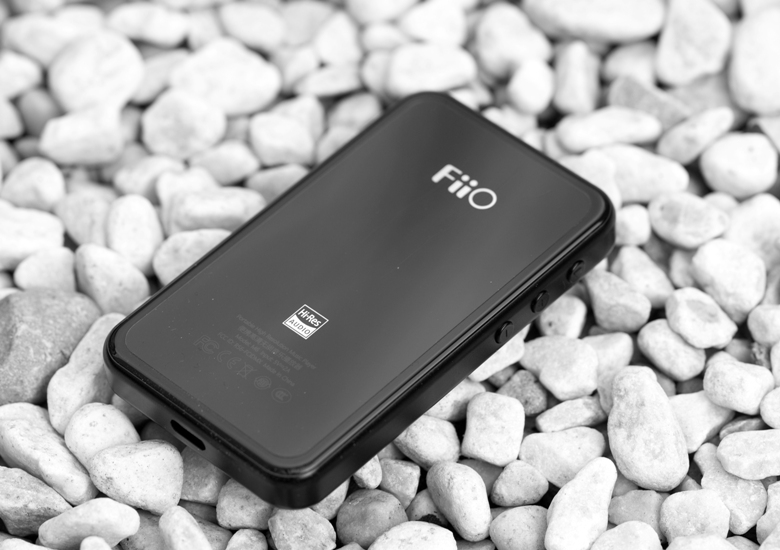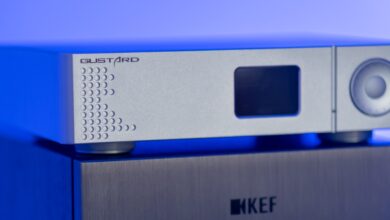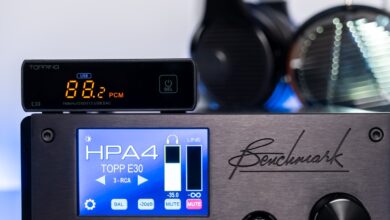
Disclaimer : The FiiO M6 was sent to us free of charge in exchange for our honest review. We thank FiiO for that!
For me newest addition to the M series of DAPs from FiiO came as a surprise. I just didn’t see it coming and no one knew about the M6 development.
A bigger surprise came after I realized that it is positioned lower and cheaper than M7 but it is more advanced in terms of feature set and even in the sound department. I mean, how could you do a cheaper alternative that sounds better and has overall more features? It is almost impossible!
Reviewing the flagship M9 shown a clear departure from the old FiiO sound and user experience, it was just so free of bloat-ware and third-party apps, it had great UI (User Interface) and sounded excellent from IEMs to full sized headphones. FiiO has everything that is needed to develop and bring to the market a cheaper alternative to the high performance M9 and truth to be told M6 might be just that.
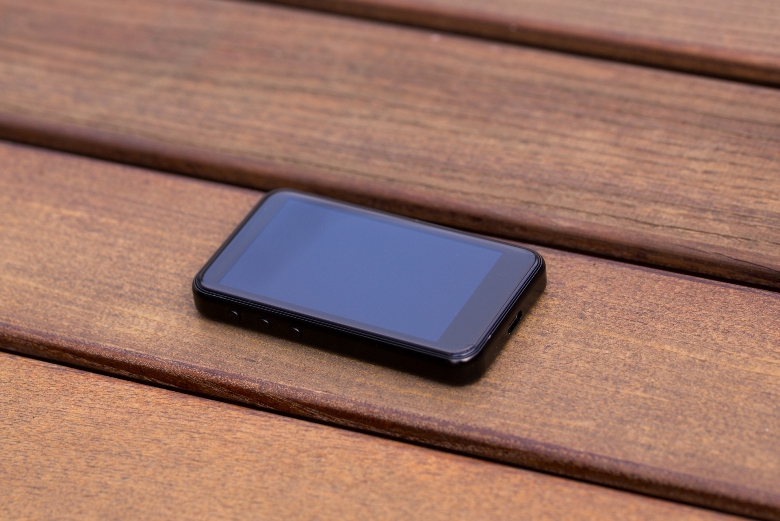
Design and Build Quality
First and foremost…just look at it, it’s so small and so comfortable to hold, it is almost as small as M3K but offers so much more. It looks pretty simple and straightforward, a minimalist design for sure. The front and the back are made from sheets of glass and the chassis resembles some sort of hard plastic (but it could be metal, I’ll investigate more).
I’m a little sad that all the ports and buttons were not moved only on the lower and left side (as was the case on M9) but are present on all sides of the DAP.
On the right it has the volume and play/pause button, volume wheel found on the M7 and M9 was removed for obvious financial reasons. The single 3.5 mm jack is found on top and has a double duty: it works as a SE (single ended) headphone output or as a clean 1.5 Volt RMS line-output, there’s also the On/Off button. MicroSD card slot was moved to the right and the USB type-C connector for charging and music transfer is found on the bottom. With a little more thought I think FiiO could put all the ports and buttons on just two sides of the DAP, hopefully next-gen M6 will have a cleaner look.
Apart from that I kind of like it’s simple and elegant design, it is a little plain looking but it works fine for me.
It looks much smaller than older generations of FiiO DAPs, it’s smaller than M7 and X1 MKII and about the size of the M3K. It’s lightweight and easy to carry, so on the portability scale M6 looks to be the king of the hill.
The digital coaxial output was dropped, so is the FM radio receiver however much more important features were added which I’ll mention very soon. Seriously though apart from my grandparents I do not know any serious music listener that is also using FM Radio. I do not listen to traditional radio, but when I do, I’ll make sure it’s R.A.T.M.- Guerilla Radio.
The 3.2” IPS touch screen is very similar to the ones found in the M9 and M7, I do believe all three devices are using the same display assembly. This particular display has a resolution of 800 x 480 pixels that leads to 292 dots per inch, it is more than enough for a display of this size.
Image quality is always crisp and bright, the colors look a bit pale comparing to a higher end smartphone, but at 150 USD MSRP I really can’t complain.
The bezels around the LCD are smaller compared to ones found on M9, a direct cause of a smaller body.
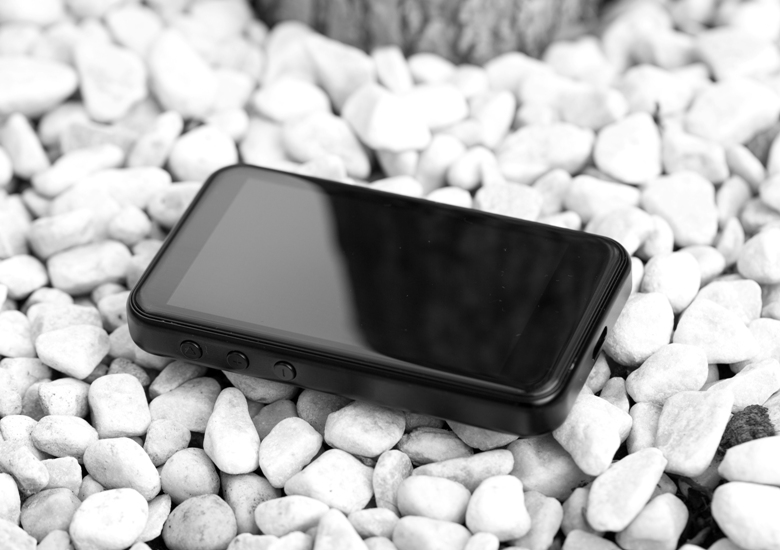
Under the Front Glass
M7 was first to ditch a fully-fledged Android OS and use a lighter, custom made Android OS finely tuned by the FiiO engineers. M9 and M6 followed the same path of less is more and here we are.
You can no longer install any third-party apps on your M6, but only the ones white-listed by FiiO. Upon powering on few streaming apps are already preinstalled such as: Tidal, MOOV, NetEase Music and KKBOX. As far as I know you can install Spotify, Qobuz, Roon, Deezer, Amazon Music, SoundCloud, Bandcamp, QQ Music, Xiami Music, JOOX, ES file manager, Himalaya, Radio World and TuneIn Radio – just copy the .apk file to the root of your microSD card and then install them via the file manager, is not that difficult. Annnd before anyone asks: Yes, you can save your favorite Tidal tunes and play them offline! Really like this feature.
WAIT……wait a minute! Streaming? You mean this little entry level fellow has Wi-Fi and Bluetooth streaming capabilities? Yes, that is right!
FiiO used a very powerful Samsung made Bluetooth chip, it’s a novelty in FiiO’s portfolio because it’s not only a transmitter but can be a receiver as well (Dual Bluetooth modes), it can send and receive data in aptX, aptX-HD, SBC, LDAC and HWA! To this day M6 together with M9 are the most complete Bluetooth capable DAPs out there.
When it comes to Wi-Fi capabilities, M6 will work only with 2.4 Ghz networks for a more stable signal. Besides the ordinary Wi-Fi streaming, AirPlay is also enabled. FiiO also developed a very neat feature called FiiO Link, it basically links your smartphone to your FiiO Link enabled DAP (M6 or M9) and you can control your DAP that sits in your pocket by using your smartphone. I find this feature interesting when jogging or when I’m using my DAP as a source in a car.
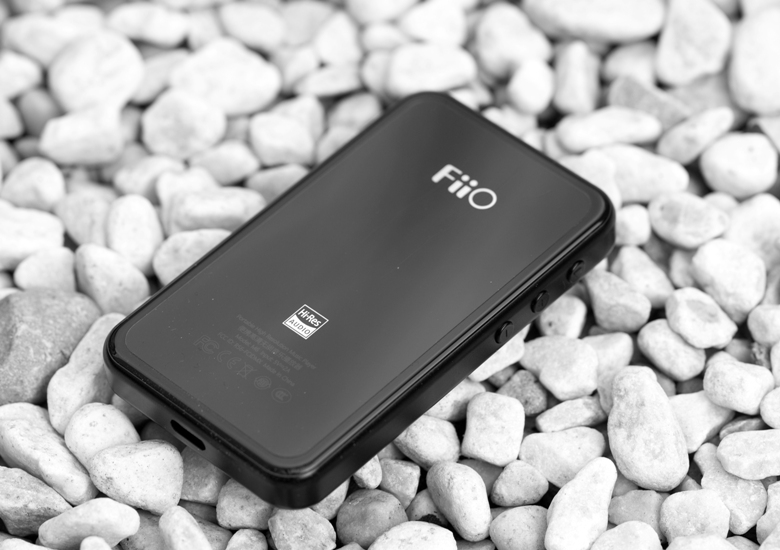
The CPU that beats inside is the same Samsung Exynos 7270 dual-core, clocked at 1 Ghz that also powers the M7 and M9, 768 Megs of RAM were squeezed inside, it’s not much but enough to run a single application at a time.
At the heart of audio processing sits the good old ES9018Q2C that in time proved to be a really good mobile chip. What is so good and what it really lacks?
The good news is that ES9018Q2C besides being a high-performance mobile DAC, it is also a headphone amplifier and the final output stage is inside it as well. For us, listeners it means no op-amps are found inside, there is a much shorter path in the audio decoding to the audio signal will stay purer and cleaner. A single SoC also means a better battery life and a much smaller case, this is all very desirable.
The bad news? No dedicated op-amps for LPF and headphone amplification means the actual headphone amplification will be much weaker that will not drive desktop class headphones.
Power wise M6 offers 110mW into 16Ω and 70mW into 32 Ω, that is a little more than M7’s output and much less than that of M9. M6 doesn’t have a balanced HP output, it offers a SE only output.
The 1600mAh Li-PO battery should offer more than 13 hours of play for easy to drive earphones and about 15 hours when streaming via Bluetooth. With my Sennheiser Momentum M 2.0 over-ear headphone on 65 volume (out of max 120) I’ve got 12 hours and 5 minutes, that is less than the claimed battery life but my M2.0 are harder to drive and need a higher voltage swing so that is understandable.
M6 has a deep sleep feature as well, it will stay up to 26 days in standby mode, I didn’t test out this myself for obvious reasons so take it as it is.
-3-1.jpg)
Graphical User Interface (GUI)
The standard FiiO Music app on the 1.0.1 firmware never crashed on me and works as intended for more than a week. I have a larger music library that a like to browse by folder, if I want to listen to a particular song the search function really comes in handy.
Unfortunately, Tidal app on the 1.0.1 firmware crashes a lot, it is not FiiO’s fault I’m sure. After a lot of tinkering I decided to uninstall the app from it and install it manually by downloading the final version 2.9 as of now. Using this version works flawlessly and all the crashes are gone, I’m sure FiiO already knows about this and will be updating the Tidal app in the future firmware update.
As with M7 and M9 FiiO used a lot of screen gestures to shortcut you directly to different settings of the device. I suggest inspecting the user manual to find more about all of them.
Upgrading the firmware is recommended to be done Over The Air (OTA) as at the end of the update process the .fw file will be automatically deleted. Overall the M6 GUI is very polished (on V 1.0.1 fw), it’s fast, it doesn’t stutter, it is a bit slower than my phone on Tidal, but that understandable given the hardware M6 uses.
I think it’s time to listen to some music folks.
-5-1.jpg)
Audio Performance
There is something I want to write about first: the M6 DAP has a noise floor of less than 3 uV and a Total Harmonic Distortion (THD) of less than 0.002%. M9 that is almost 3 times the price has the same THD and a noise floor of 5 uV (a little bit worse).
Those are impressive numbers for a 150 USD device.
In real life tests M6 proven to be excellent with all In-Ear Monitors (IEMs) we have tested it with. It also has a less than 2 Ω output impedance that will work great even with very low-impedance IEMs. FiiOs own multidriver balanced armature FA7 IEMS and FH5 hybrids worked very good with it. We heard no noise, no humm, just a clean and open sound without a strong coloration FiiO would use in the past.
The sound overall resembles a lot of what I’ve heard on the M7 with a slightly better control over the headphone drivers due to a higher power output.
Most of the time M6 will be just fine for your typical IEMs or portable headphones, however it will not deliver enough power for desktop class headphones and even for some multi-driver balanced armature-based IEMs.
I connected the FiiOs own FA7 and started a listening spree for several hours in the central park.
Perceived sound was clean, with no additional coloration that led to a flat frequency response. The sound was not laid-back by any means but not super punchy either. In my opinion FA7 puts a big pressure on M6 as it struggles especially with the bass response.
I know Hotel California by Eagles in DSD format very good as it could be a reference for soundstage testing and spatial cues, it also a very good track to test out the punch and low-end response. When first drum kicked, I thought FA7 were goners and broke somehow because there wasn’t that low end that I am familiar with. It is there with M9 even on the SE output, so I know that FA7 are capable of rendering deep bass, but it was not the case with M6.
I switched fast to my Momentum M2.0 and there was it, deep rumbling bass came back and hit hard. The problem lies in the output stage of the M6, its headphone amp is just limited and cannot supply enough voltage for crazy dynamic swings. Multidriver BA IEMs users out there be warned about this.

Sub-bass performance is OK, put a portable headphone amp between M6 and your headphones and you could have great sub-bass performance, however in its stock form sub-bass seems suppressed and limited. Even on fast electronica it is harder to be detected, I feel that this frequency extreme will not please any bass heads.
Mid-bass section on the other hard is much improved; actually, it seems to be the only audible range that I feel is emphasized a bit. Firing up tracks with lots of bass guitar riffs was a real threat on M6. Tim Commerford’s guitar is like on fire throwing bass heavy riffs to the listener, on these particular tracks FA7 shown great potential and sounded much better.
It’s clear to me that M6 paired with wrong headphones could lack some dynamics and kick, but with majority of portable headphones and IEMs it should be just fine. When M6 has enough juice it will sound alive and kicking, without putting a bottleneck on dynamics.
To be sure I am listening to the best M6 can offer I continued my tests only with M2.0.
Midrange performance is pretty good but not magical how it was the case on M9 for example. Strings most of the time will have a shorter decay and are disappearing faster from the spotlight. Voices are centered and have a good outline in crowded passages. ESS chipsets have never really had the best midrange performance and M6 doesn’t either.
Highly pitched voices do not have the explosive dynamic range that I am accustomed to on higher priced DAPs or DACs, but then again, at 150 USD it’s more than adequate.
The most important aspect of midrange performance is that it is always clean with lots of spatial cues around, I can’t stand muddy midrange performance and crowded stereo image, luckily M6 doesn’t have any of that.
Treble performance is second best part as it is always clean, very tight but not sibilant or grainy. It has a good presence and bite, cymbals have that right amount of shimmer, too much and it could be bothersome. It certainly has a revealing nature that will highlight any imperfections of a song.
Soundstage size is medium to large, just a tiny bit larger than that of M7, I believe it is better even than that of X3 MKIII (on SE output). It’s not huge by any means but I can easily walk with my eyes closed around the singers. FA7 and Momentum 2.0 never sounded crowded and lacking air so that is good enough for me. By comparison I feel that M9 has a larger soundstage only on the balanced output.
Overall, I think M6 offers an honest sound with a linear frequency response without lots of highlights. Battery life seems good (but not great), build quality is nice and it has the right size for my hand and pockets.
Now onto some comparisons with FiiOs siblings.
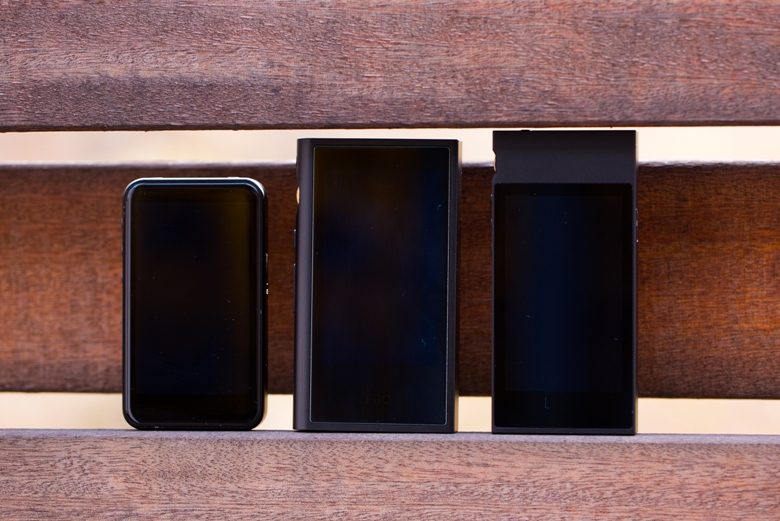
Comparisons
M6 vs M7
The most logical comparison would be with M7 that shares a lot in common with M6, the CPU and the DAC chips are identical, so is the display assembly. M7 has a FM radio receptor however M6 over very strong Bluetooth and Wi-Fi streaming capabilities that are not present on M7.
Overall build quality is nicer on M7 that has a metal body and a volume wheel, it is just sexier and bolder looking.
In the sound department M6 is a just better: For offline music listening M6 is barely better than M7 having a tighter sound overall and a more powerful headphone amp section. M6 also also sound a tiny bit clearer and tighter, it has a better control over the headphone driver.
For on-line music listening via Wi-Fi there is not contest, M6 has it, M7 can’t do that. For your Bluetooth cans M6 again wins.
Why M6 is cheaper than M7? Because I do not understand, in my opinion it should be called M8 as it seems to be an improved M7 and not a side step or downgrade.
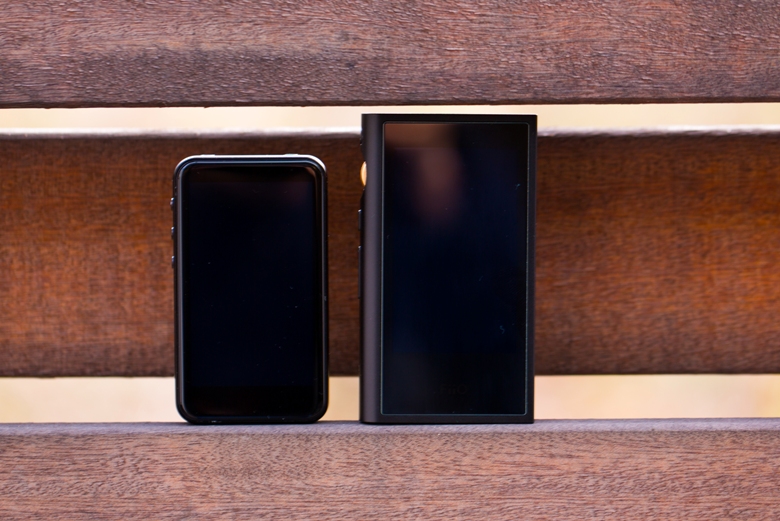
M6 vs M9
M9 looks and feels much sturdier in hard, it has an aluminum uni-body and just a sheet of glass on top, in my opinion M9 it is the best looking FiiO DAP to date built to high standards.
M9 has dual-DAC setup and dedicated electronics for LFP and headphone amplification so M9 sounds clearly better on every single headphone tested. In balanced mode it easily drives even Sennheiser HD660s with lots of headroom to spare, it’s just a headphone driving powerhouse.
Frequency wise M6 is more linear as a straight line; M9 is more euphonic, especially in the midrange. M9 is capable of deep sub-bas response, M6 can’t do that.
Treble performance is almost identical; both sounds really great with classical pieces and overall offer great performance in this area.
When it comes to streaming via Bluetooth or Wi-Fi both are offering the same codecs and signal strengths, so it’s a tie.
Stage size is bigger on M9 but it is not that smaller on M6, on balanced output however M9 jumps straight ahead.
Both are sounding clean and both offer a good transient response. I like both, but in sound department there isn’t a contest, M9 is just better.

Conclusions
I really liked FiiO M6 for what it is, its streaming capabilities blew me away especially at this price point. Up until now I do not know any DAP that has the same Bluetooth codecs support and the same third-party streaming apps support via Wi-Fi at this price range.
Seriously now, for $159 you are getting a nicely build DAP, that is small, lightweight and truly pocketable, it is also noise free with any of your IEMs or sensible headphones and will sound always clean, fast and accurate. Can you ask for more?
Yes, it has some quirks design wise but those are just ramblings of an avid audiophile that I am sure many of you don’t care about. All in all, M6 offers a crazy price to performance ratio that will be hard to beat in the coming future.
If you are located in USA, I recommend getting it from here. (They are offering free shipping in the USA, free 30-day returns in case you don’t like it, an extra 1 year of warranty and lowest price guarantee).
PROS:
- Clean and airy presentation
- Almost flat frequency response
- Decent sized soundstage and a good depth
- Has a good balance between musicality and technicalities
- Great Bluetooth codecs support
- Great Wi-Fi streaming support
- Lightweight, tiny and truly pocketable
- Excellent price/performance
CONS:
- Lacks a balanced and a coaxial output
- Power limited on some occasions
ASSOCIATED EQUIPMENT:
- DAPs: FiiO M6, M7, M9
- Headphones: Sennheiser HD660S, Momentum M2.0, FiiO FA7, FA1, FH5
- DACs: Matrix X-Sabre Pro + X-SPDIF2, Burson Audio Playmate
- Headphone amps: Headamp Gilmore Lite MK2, Pico Power, Burson Audio Playmate
